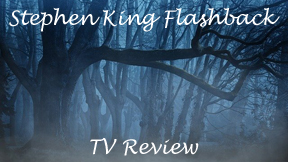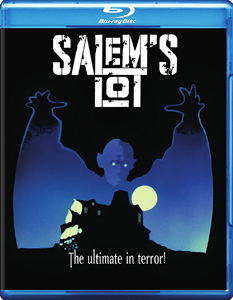Miniseries based on Stephen King works used to be great ways to get safe scares in the comfort of your living room, with the whole family gathered around the TV, perhaps with a cozy fire crackling. But as I continue on my journey through King adaptations, I’m worried they won’t hold up with the passing of time.
On a TV budget
That worry is warranted with “Salem’s Lot” (1979), the first King miniseries and second overall adaptation (following “Carrie”), which was told via two episodes on CBS. The miniseries perhaps inevitably sucks the scope and commentary about dying small towns out of King’s novel.
The story is still there, and characters are mashed together by writer Paul Monash – sometimes cleverly, but other times we lose something.

“Salem’s Lot” (1979)
CBS, 2 episodes
Director: Tobe Hooper
Writer: Paul Monash (teleplay), Stephen King (novel)
Stars: David Soul, James Mason, Lance Kerwin
Even with good cinematography from Jules Brenner and set design that reasonably transforms a backlot into a Maine township, “Salem’s Lot” flirts with being boring. Director Tobe Hooper was gaining a reputation for “The Texas Chain Saw Massacre” by this time, but he’s still amateurish on this project.
Other than length, there’s little difference between a movie and a TV miniseries today, but in the 1970s, TV meant a much lower budget. On the other hand, some people probably like “Salem’s Lot” because of its cheapness, finding it charming.
A mixed bag
Some things are done well in a vacuum, but they are often undercut by things that aren’t done well. A single scene illustrates this. The younger of the two vampire-hunters-by-necessity, Mark (“James at 15’s” Lance Kerwin), sits at the dining room table with his mom and dad. The house’s earthquake-like shaking is well done. The appearance of vampire Barlow (Reggie Nadler) is suitably creepy.
The creature makeup (Frank Torro has the only “special effects” credit) is excellent: Barlow has that iconic “Nosferatu” look that signifies his ancient status. The Turok-Han vampires from “Buffy” Season 7 would adopt a similar visage. (It’s interesting to think about Sunnydale as an updated and coast-transplanted Salem’s Lot, but “Buffy” doesn’t go beyond its main characters enough for that “troubled small town” link to snap in place.)
But then the staging of Barlow banging the parents’ heads together and drawing Mark into his clutches is awkward. And Straker (James Mason) speaks for Barlow here, a change from King’s novel. Maybe having Barlow speak would’ve been cheesy, and this miniseries already has a lot of cheese.
Occasional scary vampire shots (note Barlow’s pop-up in the jail cell) are undercut by ridiculous shots of them floating outside windows in clouds of smoke. Hooper lingers on these ineffective moments. I looked for wires to pass the time, and to the series’ credit, at least I didn’t see any.

The miniseries earns back points at the end: The Marsten House lives up to its “Haunting of Hill House” heritage better here than in King’s book. (Oddly, King does not use the house as the climactic setting.) It seems covered with green slime. And I’m a sucker for a creepy hidden room within an already creepy basement.
Hunters and victims
David Soul has the lead as the other amateur vampire hunter, Ben Mears, a novelist visiting his childhood hometown. While Soul has leading man presence, I didn’t really like Ben’s consistent direness. But Bonnie Bedelia classes up the joint as Ben’s girlfriend Susan.
Viewers will perhaps recognize George Dzundza (early “Law & Order”) as abusive and jealous husband Cully, and Fred Willard – known for comedies — as realtor Larry Crockett. These actors play out a memorable scene from King’s book, but with Willard having similar physical presence to Dzundza, the novel’s bullying angle doesn’t translate.
Crockett then gets turned and disappears from the narrative, a fate shared by several characters. Granted, King’s novel is the same way, but because the whole town is a character in the book, it plays well there. In the miniseries, both characters and story slip out of my mind as it goes along.
Despite some praiseworthy aspects, “Salem’s Lot” – which was remade as a miniseries in 2004 and as a film set for later this year — is a chore to sit through. I’m surprised to learn it’s quite well regarded. Perhaps King geeks and ’70s TV nerds like it because of nostalgia or curiosity. I hope later King miniseries hold up better.
On Fridays, RFMC reviews a Stephen King book, adaptation or related work. Click here to visit our Stephen King Zone.

